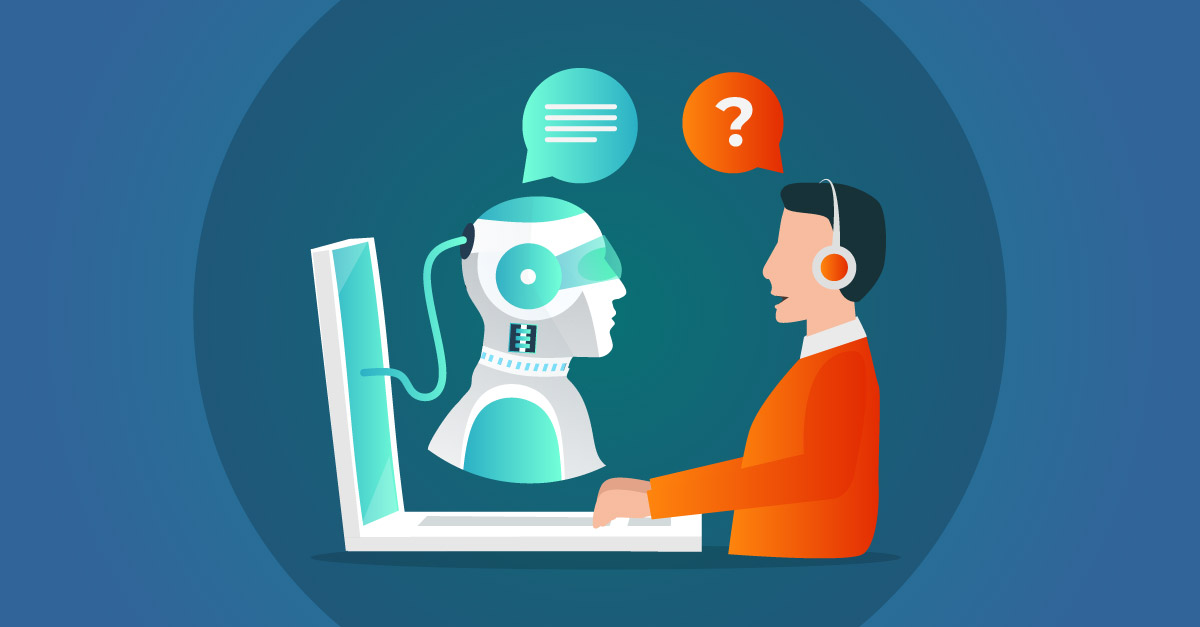Where self-service portals and chatbots dominated customer service for a long time, the next trend, to improve customer interaction and service quality, seems to be set by generative artifical intelligence (GenAI). The application of this emerging technology is increasingly seen in well-known platforms such as Zendesk and Salesforce Einstein, which use AI to enable personalised and more efficient service and improve current functionalities within systems.
The role of GenAI in B2B sales and Customer Service
GenAI is not simply a new technology, but rather can be seen as a collaborative partner. In B2B sales, GenAI strengthens the sales team on sales support tasks and marketing topics, freeing up team members’ hands, improving performance and ultimately generating more revenue (D’Angelo et al., 2023).

Looking at customer service, the application of GenAI will be able to increase productivity by 30-50% over the next three years (Bamberger et al., 2023). However, for now we are still in the third phase concerning the implementation of this technology, human-like self-service. After all, GenAI currently still contains relatively many sensitivities and inaccuracies, requiring human supervision to further train the model. Therefore, to make GenAI work for your organisation at this stage, a good balance and interaction between GenAI and team members is very important to ensure the reliability of the output.
Insights and Personalization
Another big advantage to GenAI will be enabling personalised customer experiences on a large scale. For instance, GenAI will not only make it possible to provide answers or suggestions to a customer or customer service agent, but also analyse data and come up with strategic insights (Kudyba, 2018). Based on these insights, the organisation can recruit strategic insights to understand their customers even better and recognise trends. One industry where GenAI is already deployed in this way is the financial sector; within the sector, personalised solutions and strategic choices measurably increase customer satisfaction. In this case, GenAI is not just a tool but the instigator when it comes to permanently changing customer contact through a far-reaching personalised experience.
Tools and applications
As described earlier, GenAI still needs to take some steps to provide complete support for every challenge. Nevertheless, organisations today can already benefit from the technology in applications such as Zendesk. The AI within Zendesk enables customer service agents to send AI suggested empathetic responses or offers (Mitchell, 2023). In doing so, Zendesk rests on the most fully trained AI currently available, namely ChatGPT, to further improve its own technology and get the most out of the Zendesk platform. The ultimate goal here is not to replace the agent’s work but rather to complement it and thereby improve the overall customer experience (Siggelkow, 2023).
Catching on to Zendesk’s vision, the integration of GenAI into B2B Customer Service seems inevitable, but also essential to provide improved, personalised and more efficient customer interaction.
References
Bamberger, S., Clark, N., Ramachandran, S., & Sokolova, V. (2023). How generative AI is already transforming customer service. BCG Global. https://www.bcg.com/publications/2023/how-generative-ai-transforms-customer-service
D’Angelo, S., Gauch, B., Hawks, A., & Ward, M. (2023). Get your B2B sales team ready for the power of generative AI. BCG Global. https://www.bcg.com/publications/2023/how-genai-can-transform-b2b-sales
Kudyba, S. (2018, July 24). Machine learning can help B2B firms learn more about their customers. Harvard Business Review. https://hbr.org/2018/01/machine-learning-can-help-b2b-firms-learn-more-about-their-customers
Mitchell, C. (2023). Zendesk expands its generative AI capabilities, announces new safeguards & controls. CX Today. https://www.cxtoday.com/crm/zendesk-expands-its-generative-ai-capabilities-announces-new-safeguards-controls/
Siggelkow, N. (2023, April 4). Create Winning Customer Experiences with Generative AI. Harvard Business Review. https://hbr.org/2023/04/create-winning-customer-experiences-with-generative-ai




